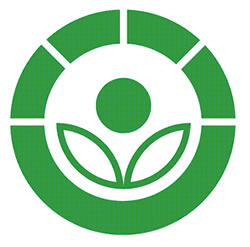Questions on FSSAI standards have been coming in prelims exam and this topic being in recent news, holds significance.
Radiation processing of food or food irradiation is a physical process in which food commodities, bulk or pre-packaged are exposed to controlled doses of energy of ionizing radiation such as gamma rays or X-rays to achieve different technological objectives. These technological objectives include extension of shelf-life, destruction of storage and quarantine insect pests, and killing of parasites, pathogens and spoilage microorganisms. Radiation processing can thus be used for enhancing food safety, food security and international trade. India is exporting radiation-hygienized spices and dry ingredients to several countries since 2000. It became mandatory in 2007 to treat Indian mangoes with gamma radiation for control of quarantine insect pests before export to the USA. New Zealand imports several tropical fruits and vegetables from Australia after their treatment with radiation. China has the largest number of food irradiation facilities in the world and is the largest user of the technology for ensuring food safety and security.
The Food Safety & Standards Authority of India (FSSAI) has issued guidelines in December regarding irradiated foods.
Key Takeaways-
- The irradiation process involves exposing food to a specified dose of ionizing radiation inside a biologically shielded irradiation chamber.
- On the basis of dose requirements, the applications of food irradiation could be classified as low dose, medium dose, and high dose applications.
- Studies show that food irradiation presented no toxicological, nutritional or microbiological problems.
- The Codex Alimentarius Commission adopted in 1983 a General Standard for Irradiated Foods and Recommended International Code of Practice for Operation of Irradiation Facilities used in the Treatment of Food.
- In India, regulations on radiation processing have been notified under Food Safety and Standards (Food Products Standards and Food Additives) Amendment Regulations, 2016.
- Radiation technology offers several advantages for processing food which are listed below:
– It is a physical, non-additive process, causes minimal change in food
– It is highly effective compared to chemicals and fumigants
– It does not leave harmful residue in food
– It can be applied to bulk as well as pre-packaged food
– It is a cold process and preserves food in natural form
– It does not destroy heat-labile aroma constituents of food
– The process is safe to workers and friendly to environment.
Important points one must know about the ionising radiation process -
1. According to the latest statement issued by the FSSAI, all food products that have undergone irradiation must carry the ‘Radura’ mark along with the tag ‘treated with radiation’ or ‘treated by irradiation.’
2. The process of irradiation includes exposing food products such as fruits and vegetables to ionising radiation like gamma rays, X-rays or electron beams to achieve certain technological objectives.
The FSSAI says that these objectives “include [an] extension of shelf-life, destruction of storage and quarantine insect pests, and killing of parasites, pathogens, and spoilage microorganisms.”
3. Based on the requirements (as per dosage), the applications of food irradiation can be classified as low dose, medium dose, and high dose.
4. As compared to chemicals and fumigants, irradiation is much more effective and does not leave any harmful residue in food. It is equally suitable for both bulk as well as pre-packaged food and is a physical, non-additive process that causes minimal change in it.
The FSSAI assures that this is a safe process that “have inbuilt safety features that prevent human exposure to radiation.”
5. Currently, food irradiation is permitted in over 60 countries including the USA and China. Apart from fruits and vegetables, spices, dry vegetable seasonings, meat, meat products, herbs, and herbal products are the major commodity groups where this technology is used.
6. Several international entities, including the World Health Organisation (WHO), have clarified the misconceptions that may occur with consumers or even policymakers.
“At high energy levels, ionising radiation can make certain constituents of the food radioactive. Below a certain threshold of energy, however, these reactions do not occur. On the basis of experimental studies and theoretical estimates, in 1980, the Joint FAO/IAEA/WHO Expert Committee on the Wholesomeness of Irradiated Foods recommended restricting the radiation sources used in food processing to those with energy levels well below those that induce radioactivity in treated food,” observes the WHO.
Difference between Irradiated and Radioactive Foods
To clarify the difference between irradiation and radioactive food further, FSSAI says, “Radiation processed foods are those that have been exposed to radiation to bring about the desired technological benefits. Radioactive foods, on the other hand, are those that become contaminated with radionuclides, for example during nuclear accidents. Contamination with radionuclides never occurs during radiation processing.”
The FSSAI guarantees that this process causes no harm to the consumer. To ensure that people are well informed about what processes the food they purchase has undergone, they have made it mandatory to have the Radura mark and tag on the products.
Radura Logo for Irradiated Foods-




